COLD HARDY
PLANTS
Growers and Breeders of Unusual Cold Hardy
Plants |
| |
|
Cylindropuntia leptocaulis
|
Quantity
of plants tested: 1
Size of plant tested: small 10" tall cutting placed in the
ground in August 1999.
Soil texture: sandy loam covered with yellow river stone.
When planted: the plants were planted in the ground in August 1999.
Winter protection: no protection.
Microclimate: warm microclimate, approximately 1 foot off a
south facing wall.
Temperature: refer to 1999-2001 winters on this chart
Findings: the plant has done well, but has received some form of
damage every winter. After the winter of 1999-2000, the branch tips
were burned and rotted. This burn was limited to approximately
1" or so. It received a little more damage after the winter of
2000-2001. Approximately 25% of the cactus was burnt and
rotted. Regrowth occurs quickly in late April and early May.
By early June, the damage is typically not noticeable. |
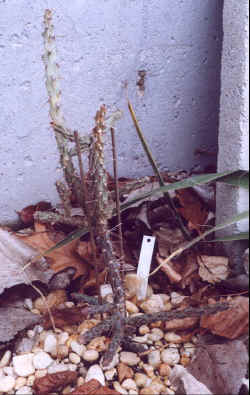 |
February
24, 2000 - This photo shows the size of the plant as of February 24,
2000 (after it's first winter). One day during winter had a high
temperature of 12F. The low temperature was -2F. No damage was
observed. |
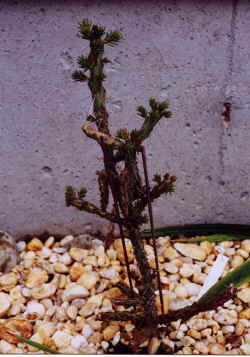 |
May
20, 2000 - here's the plant as of May 20, 2000. The
plant has many new growth points. |
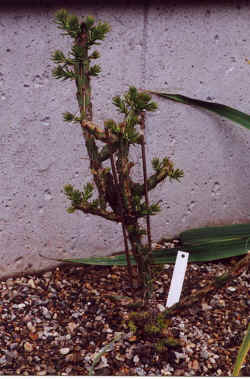 |
May
27, 2000 - here's the status as of May 27, 2000. It's a
fast grower! |
 |
June
3, 2000 - this photo shows the plant as of June 3, 2000. |
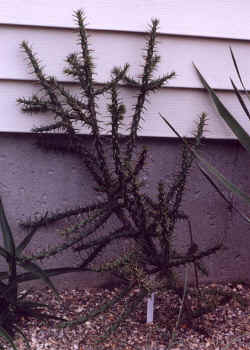 |
August
23,
2000 - here's the plant as of August 23, 2000, growing fast!!
There were no flowers this year. |
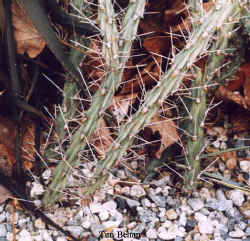 |
February
4, 2001 - this photo shows the plant on February 4, 2001. Notice
how the plant shrivals up and gets droopy during the winter months.
It springs back up in early April. |
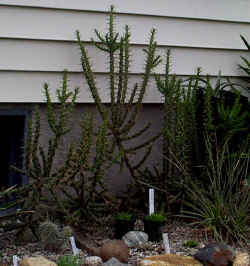 |
August
14, 2001 - this photo shows the plant on August 14, 2001. Notice
how much the plant has grown, especially since 25%+/- of the plant was
burnt and rotted after this past winter. |






